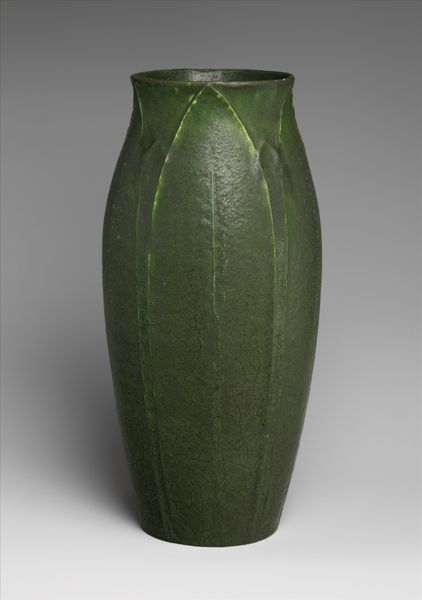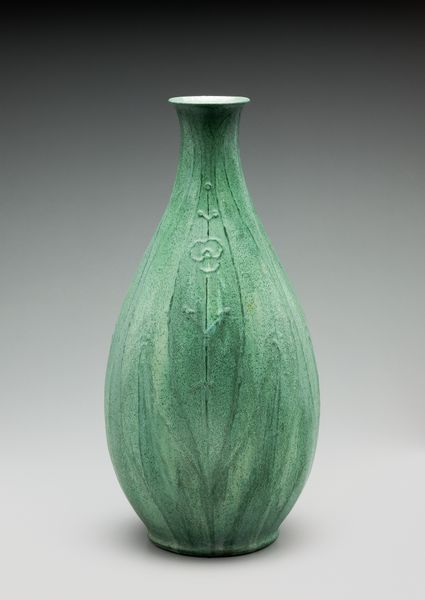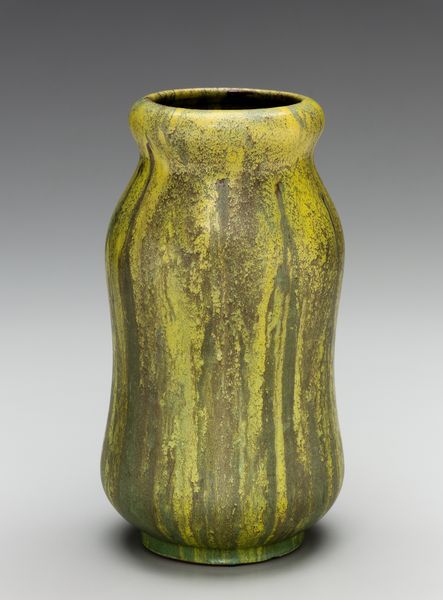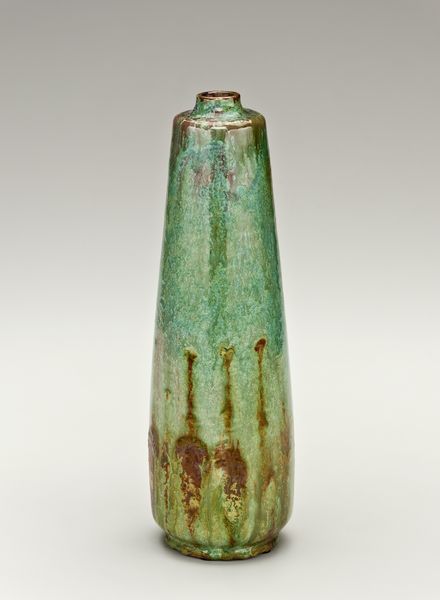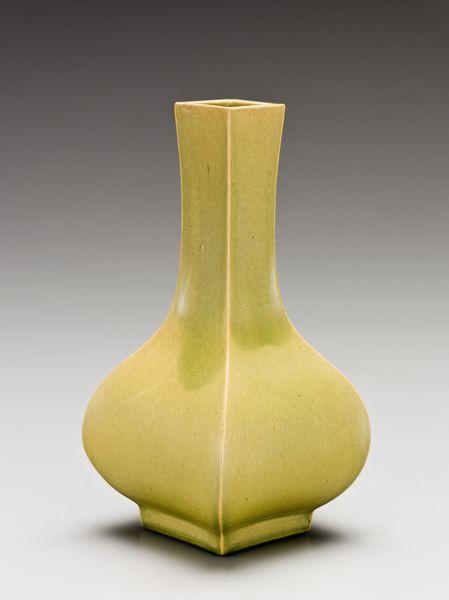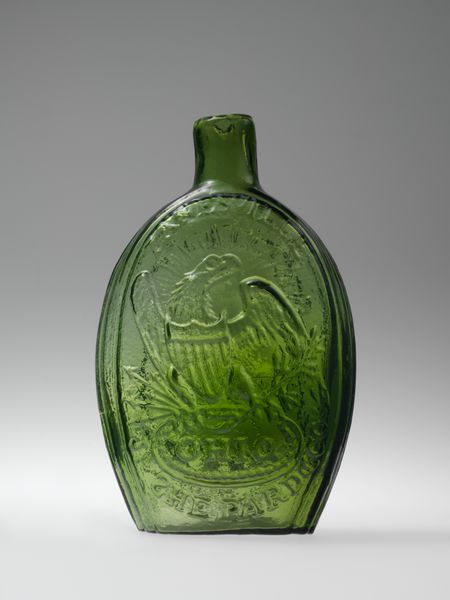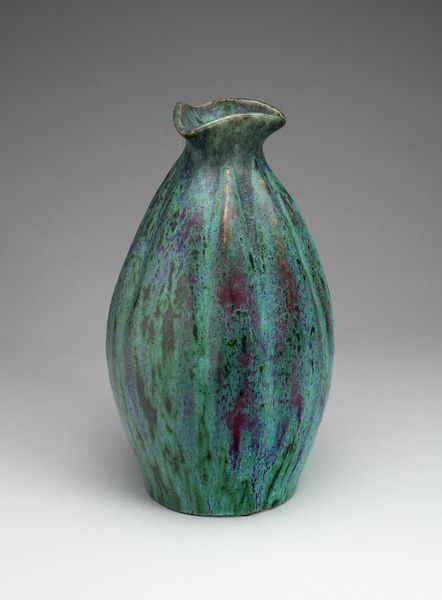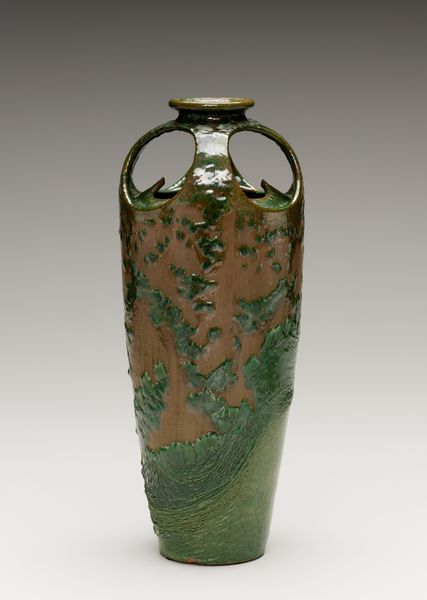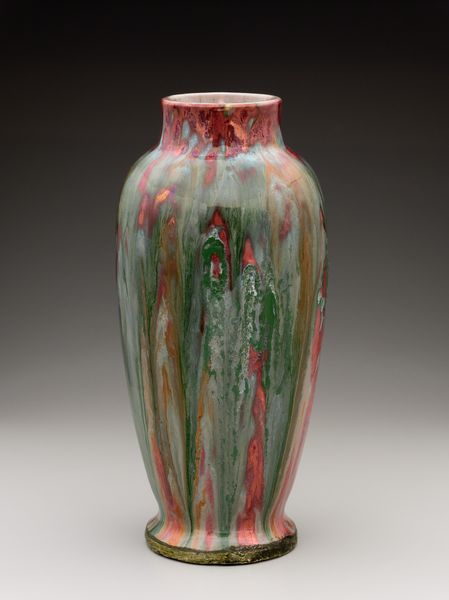
ceramic, earthenware, sculpture
#
organic
#
art-nouveau
#
ceramic
#
earthenware
#
sculpture
#
ceramic
#
decorative-art
Dimensions: 17 5/8 x 7 1/4 in. (44.8 x 18.4 cm)
Copyright: Public Domain
Curator: Here we have a piece by Grueby Pottery, simply titled "Vase." It's an earthenware sculpture created sometime between 1888 and 1904, currently residing here at the Metropolitan Museum. Editor: I'm immediately struck by its color – that intense, almost swampy green. It’s not exactly cheerful, is it? And the way the leaves are rendered – so stylized. It feels… deliberate. Curator: Indeed. The green, known as "Grueby Green," became their signature, and was the result of considerable experimentation with matte glazes. Think of it within the context of the Arts and Crafts movement—a reaction against industrial mass production. These simplified, stylized plant forms, rendered in what would have been deemed naturalistic, evoked pre-industrial craft values. Editor: So it’s not just decorative, it's a statement. What can you tell me about the labor involved in its creation? How does the means of production speak to its aesthetic? Curator: Grueby's pieces were produced through a process involving multiple artisans, which, interestingly, blurred the lines between individual craftsmanship and factory production. The molded clay body would be hand-carved, and each flower applied individually, a system that afforded quality control while efficiently meeting demand, and helped define the look of affordable Art Nouveau. Editor: That tension between handcrafting and mass production is key, isn't it? They were grappling with how to make art accessible without losing that hand-touched quality, to deliver a little organic inspiration in a period of industrial excess. Curator: Precisely. This stylized vase then isn't merely a decorative object; it's a window into the values and anxieties of its time, a statement made in clay. Editor: A testament to the ambition to marry industry and nature. Makes one ponder our own relationship to labor and beauty in the 21st century. Curator: And in that, I believe we glimpse an example of visual continuity. These desires remain at play across cultures.
Comments
No comments
Be the first to comment and join the conversation on the ultimate creative platform.

